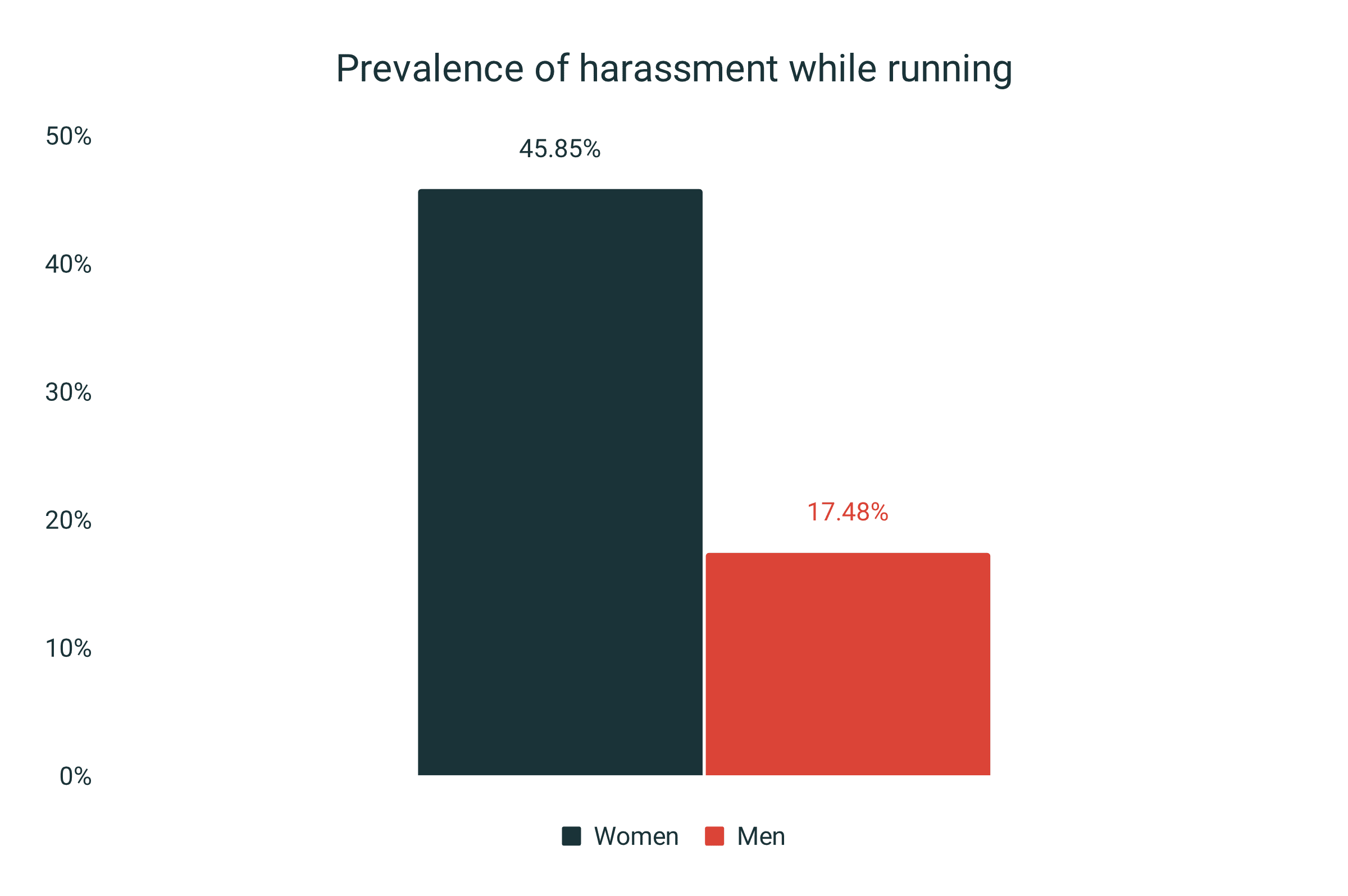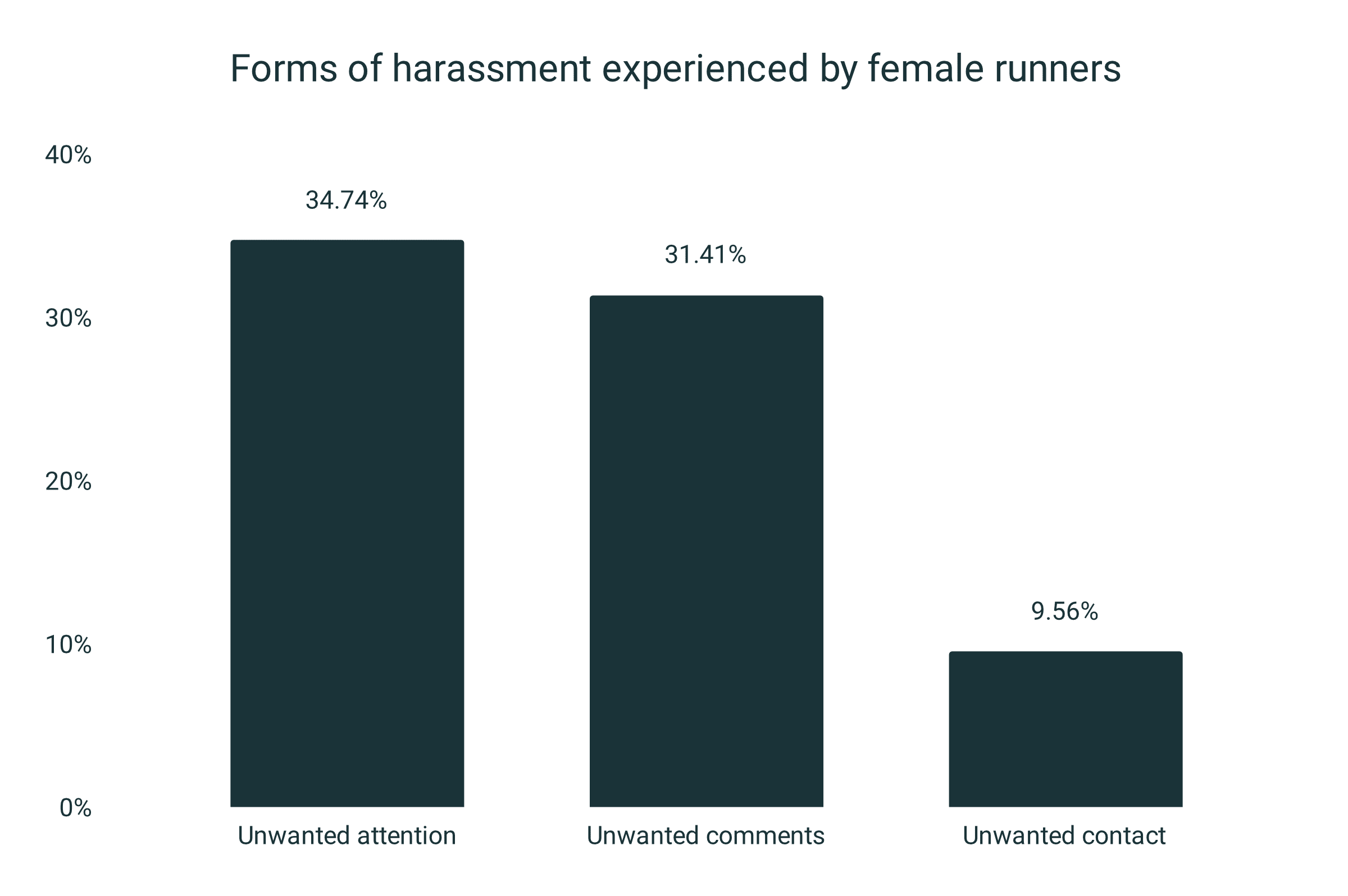45.85% of female runners have experienced harassment (Survey)
 RunRepeat recently surveyed 3,774 gym members and found more than 50% of women have been harassed at the gym while working out.
RunRepeat recently surveyed 3,774 gym members and found more than 50% of women have been harassed at the gym while working out.
To find out if this problem is isolated to gyms or a wider issue, we surveyed 4,709 runners* to understand the extent of harassment that runners face and what impact this has.
For the purpose of this survey, a runner is defined as someone who runs at least once a week.
Key findings:
- 45.85% of female runners have experienced harassment
- 9.56% of all female runners have been physically harassed while running
- Of female runners who have experienced harassment:
- 80.29% have changed their running habits (e.g. stopped running altogether, run less often, change route or clothing)
- 24.23% started carrying a weapon or device for self-defence
How prevalent is harassment while running?
Of the 1,350 female runners surveyed, 619 have directly experienced harassment while out on a run.

Therefore 45.85% of female runners have experienced harassment. In comparison, 17.48% of male runners have experienced harassment.
This suggests that women are 2.62 times more likely to be harassed on a run than a man is.
What form does the harassment take?
We asked those who have suffered harassment on a run, what that harassment looked like.

The results show that:
- 34.74% of all female runners have received unwanted attention
- 31.41% of all female runners received unwanted comments or verbal abuse
- 9.56% of all female runners received unwanted physical contact
What impact does harassment have?
80.29% of female runners who have been harassed have changed their running habits as a result.

Despite having absolutely no responsibility for being harassed, women inevitably made changes to their running routines after suffering harassment.
More than 20% of those harassed either stopped running completely or started to run less often. More than 15% switched to running indoors, and almost 20% stopped running alone.
A huge part of the joy of running is being able to go where you want, when you want, often by yourself, and get away from the world -- even if it’s for 10 minutes. Harassment places restrictions and deterrents on female runners.
The impact of harassment on female runners is really exposed when you realise a woman is:
- 6.02 times more likely than a man to stop running alone
- 5.79 times more likely to change their clothing
- 3.98 times more likely to change their route or the time they run
- 4.23 times more likely to run less often or stop running altogether
About RunRepeat
RunRepeat has compiled statistics on running and is one of the largest databases of running shoes on the web. The goal is to educate runners and provide runners with all the information they need to pick the right shoes for them rather than the most popular, trendy or expensive shoes.
We test the shoes in the lab and we also run in them. Cutting the shoes in half allows us to dig deep and examine every little thing. Thanks to our lab tests, we're able to present findings on the width of the toebox and heel counter, exact stack height measured according to World Athletic's rules, flexibility, durability, breathability, softness, and more.
